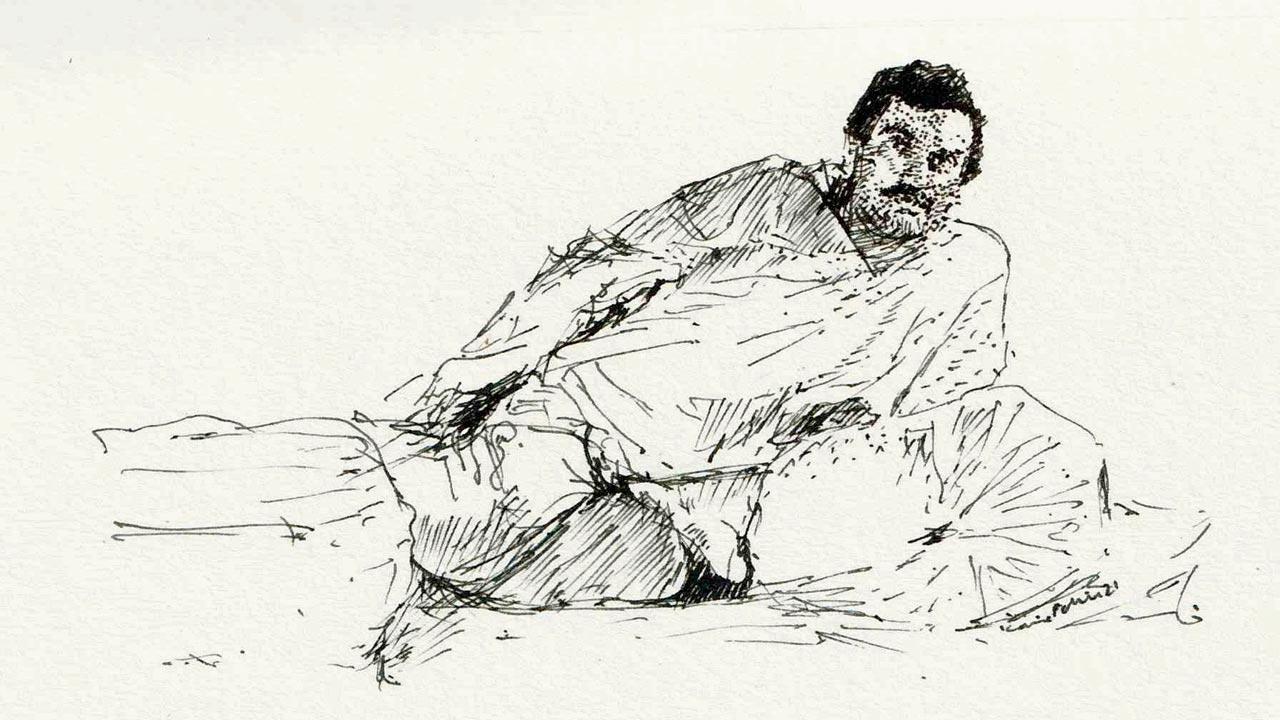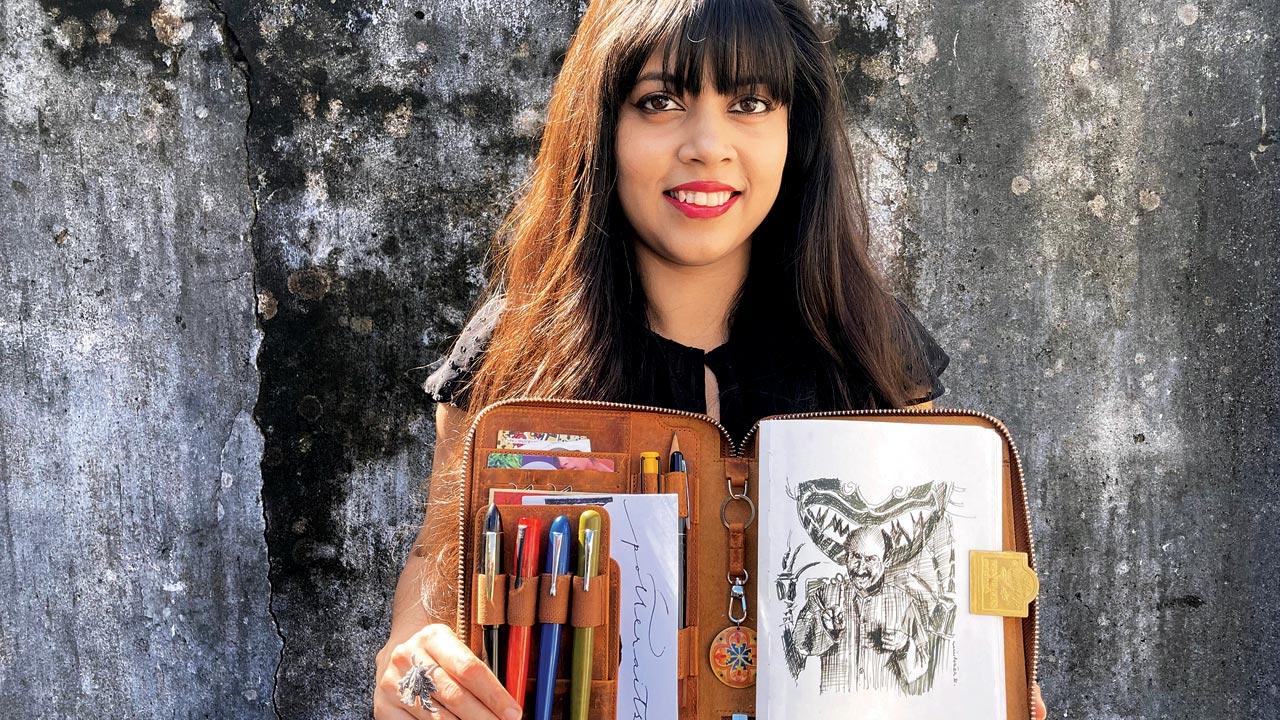An artist has started an Instagram series on Satyajit Ray’s Feluda movies, where she uses only fountain pens for her sketches

The sketch of Maganlal Meghraj
The first time that Pradosh Chandra Mitter aka Feluda, Satyajit Ray’s iconic detective character, meets his nemesis Maganlal Meghraj in the 1979 film Joi Baba Felunath is at the latter’s haveli in Benaras. Feluda walks into a dark room with his two accomplices — cousin Topshe and friend Jatayu — to find the silhouette of a man resting on his side, supported by a pillow. It’s part of Meghraj’s theatrical design to instill fear in the trio, even as he maintains a largely benign demeanour, which only makes the scene more chilling. His diabolical plan unfolds step by step, where he ultimately forces Jatayu into being a knife thrower’s subject, which makes the victim’s, and the viewer’s, heart skip a beat. But Meghraj keeps resting on his side against the pillow almost throughout, like a debauched zamindar watching nautch girls perform before him. He’s the puppeteer. The others, Feluda included, are merely dancing to his tune.
ADVERTISEMENT
 The desi-sourced materials that Roy uses for her sketches
The desi-sourced materials that Roy uses for her sketches
It’s that sinister nonchalance that Kolkata-based artist Karishma Siddique Roy has captured in a sketch of Meghraj, as part of a series she has started on Feluda on her Instagram handle, @potteraits. Her aim is not just to depict a character, Roy tells us. It’s also to depict a moment, a scene, a feeling. It’s a challenging task because the only tool she uses for her trade is a fountain pen, meaning that there is no room for error — it’s not like using a pencil or charcoal where you can erase a mistake if need be. Roy says, “My husband, Diptanshu, is a fountain pen connoisseur and he suggested last year that I use it for my sketches. I loved it; it was unlike anything I had done before. I even joined some fountain pen communities where I would share my work. That’s when things started opening up for me, and that’s how I took this medium more seriously.”
 Karishma Siddique Roy
Karishma Siddique Roy
She adds that one of these communities is operated by the age-old ink brand, Sulekha (cool fact: in a scene from Joi Baba Felunath, Jatayu, who’s a writer, is shown resting on a bed with a bottle of Sulekha ink lying next to him). Roy tells us that she uses the same brand for her sketches since she wants the project to be a wholly swadesi exercise. That’s also why the pen she uses is manufactured by a South Indian company called Ranga, while another Kolkata-based collective, Kaagazi, makes the journals she sketches on.
But there are two main reasons why she started this series in the first place. One is that the artist wanted to pay tribute to Soumitra Chatterjee, the actor who plays Feluda, and who passed away in November 2020. And the other is that the past year has been riddled with personal losses for her, and art acted as the balm she needed to soothe her emotional wounds. “It was probably the worst year of my life, and I want to make a point here about how art rescued me,” Roy says, clarifying, “It’s not just about me sketching, though. It’s also the art which Ray created — be it through his films, writing, illustrations or music — that helped me heal at my darkest hour. And the goal for me now is to stay true to that purpose — if my sketches can bring a smile to even one person’s face, if they can touch and bring people together, that would be something.”
Well, to that extent, she has succeeded. The reason is that once her Instagram series started spreading, one of the people who got in touch with her was Jit Bose, the actor who played Ruku, the child at the centre of the storyline in Joi Baba Felunath. She’d painted a portrait of the character, and Bose, who lives in Chennai now, contacted her to tell her how much her work had touched him and his family. The two have now made plans to meet when he comes down to Kolkata for Durga Puja this month. Roy plans to gift that portrait to him. Two different generations will come in contact when that meeting happens, brought together through digital serendipity. And if that’s not the magic that art as a concept encapsulates, we really don’t know what is.
Log on to @potteraits on Instagram
 Subscribe today by clicking the link and stay updated with the latest news!" Click here!
Subscribe today by clicking the link and stay updated with the latest news!" Click here!







